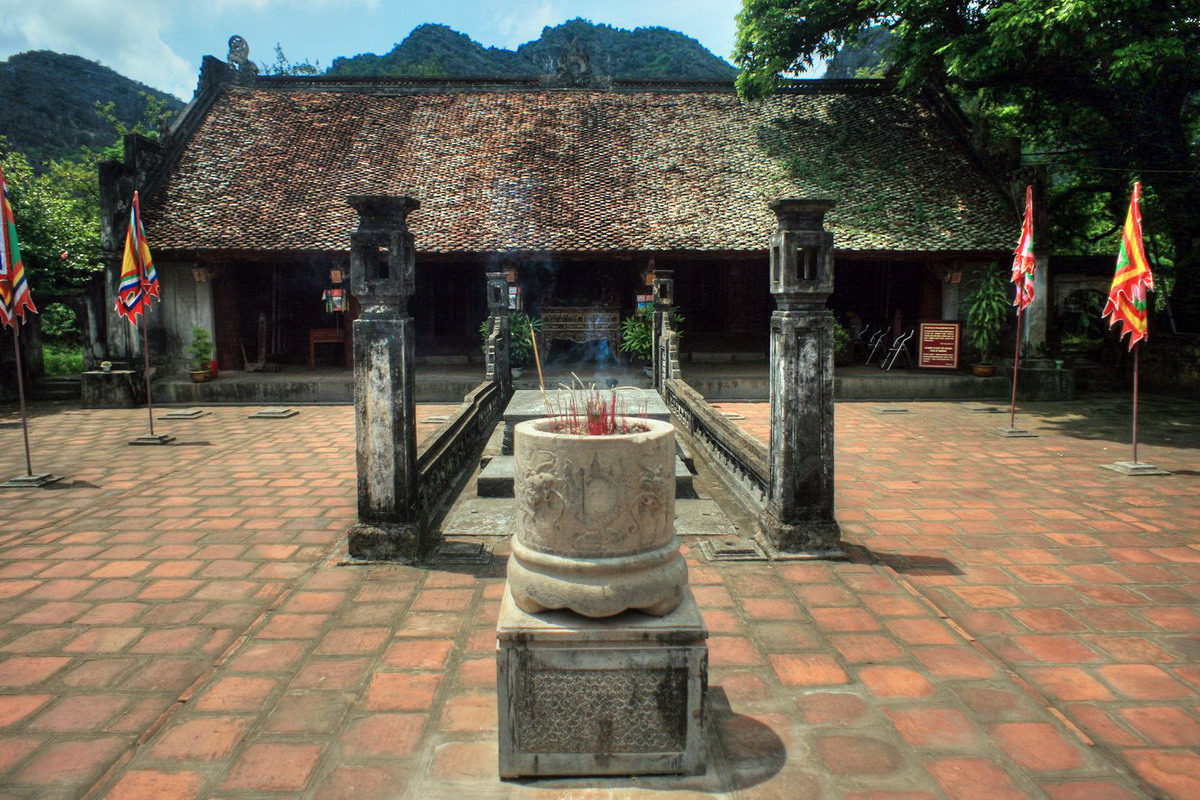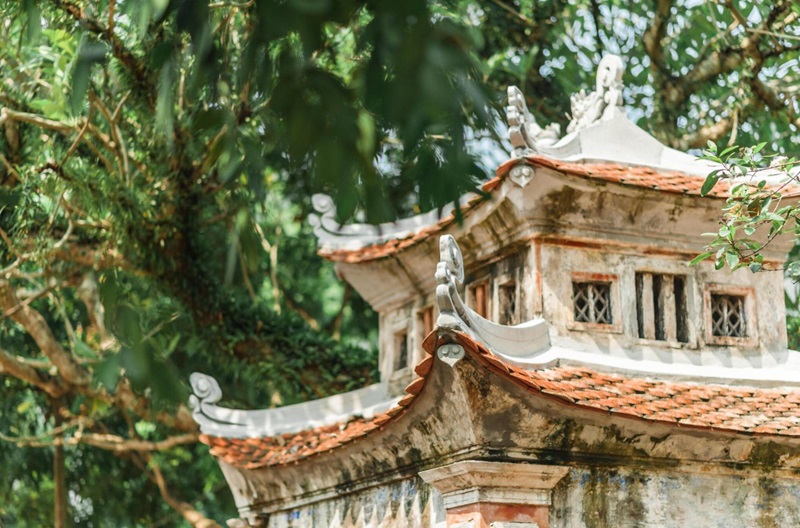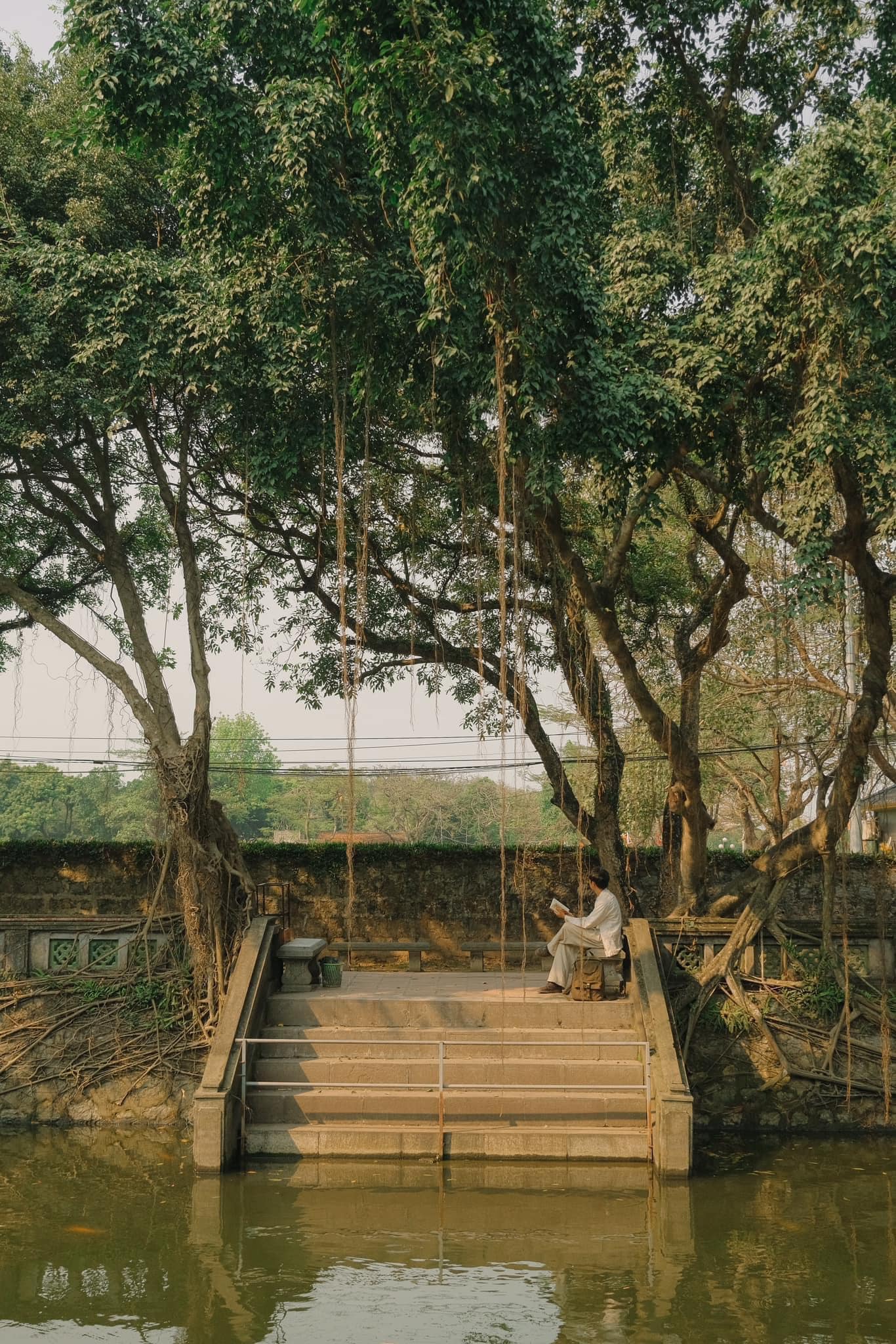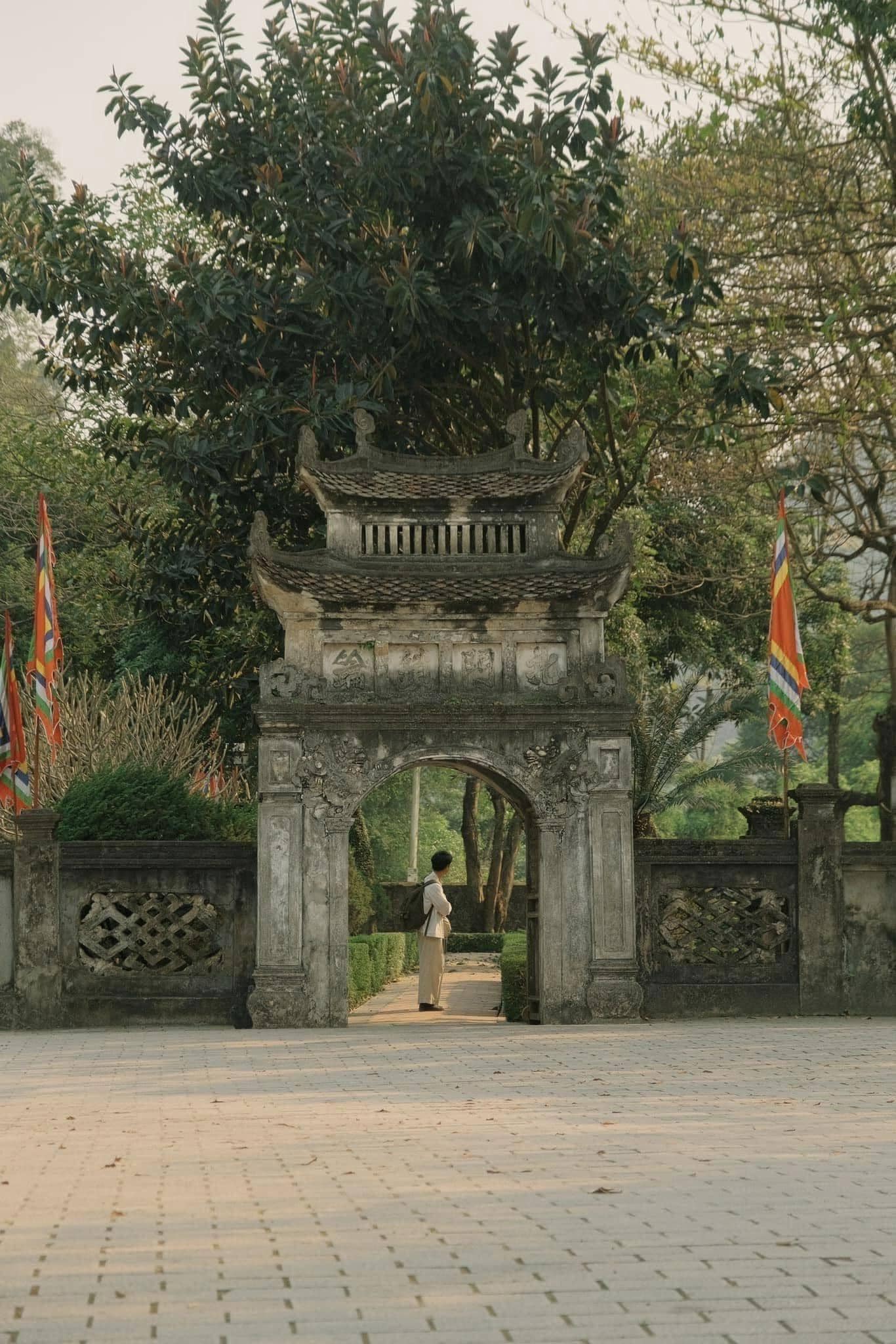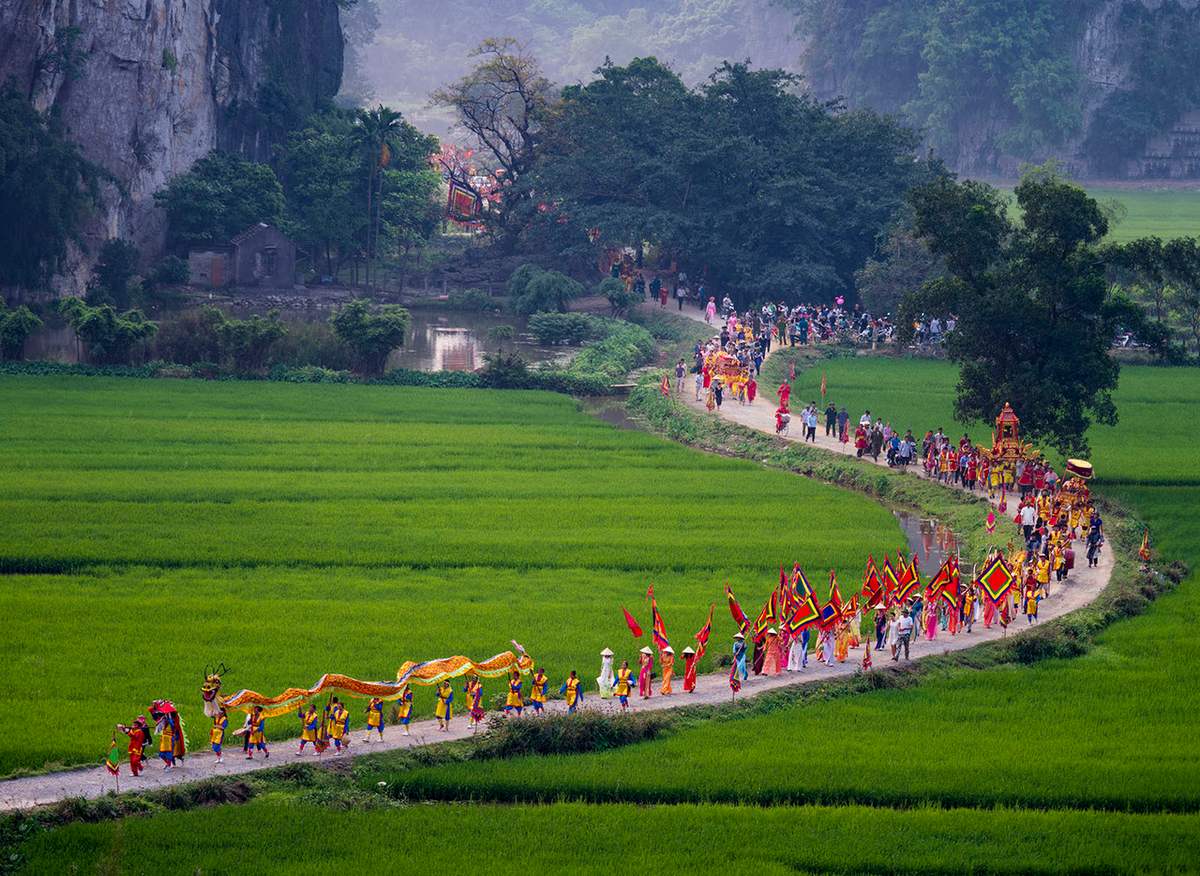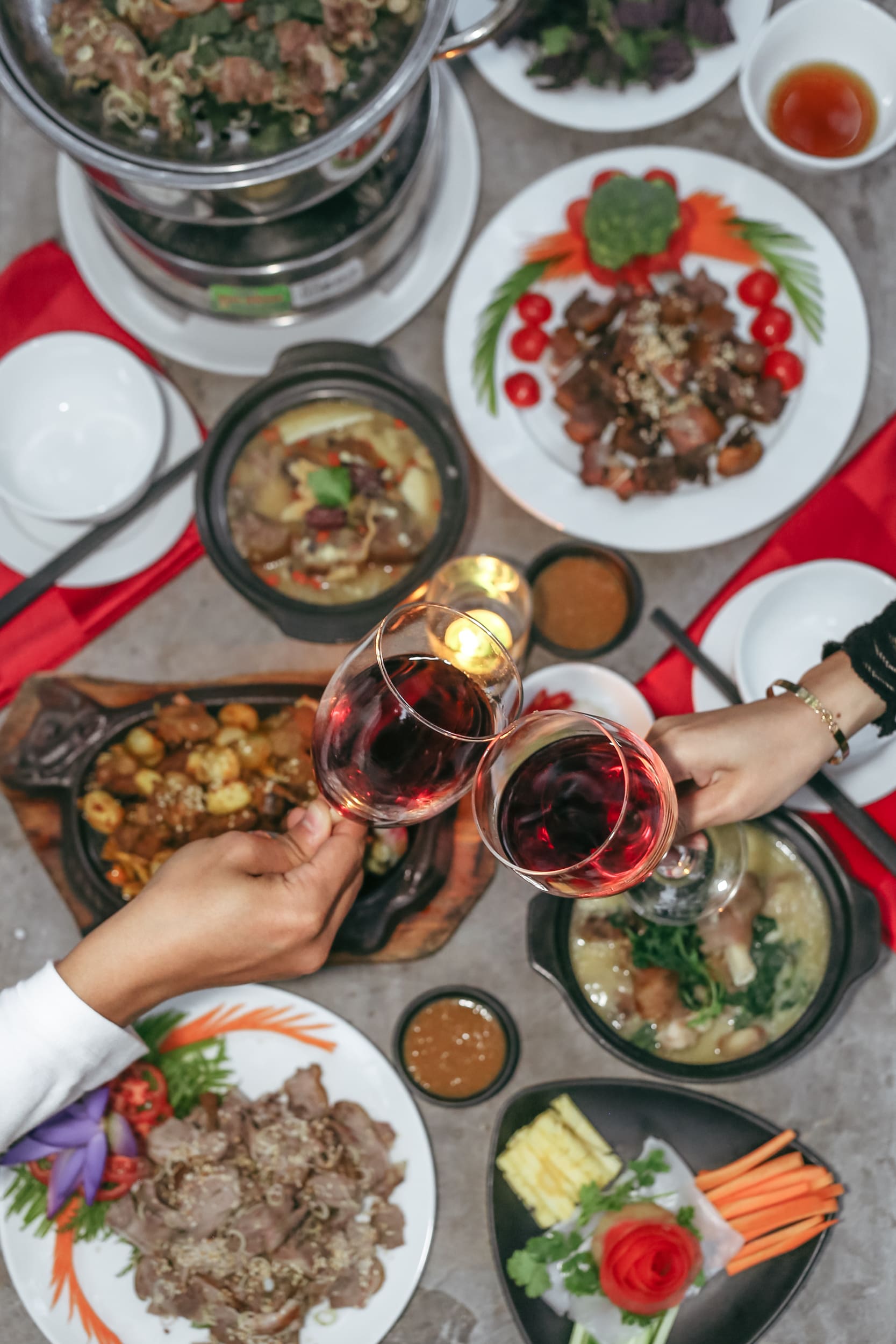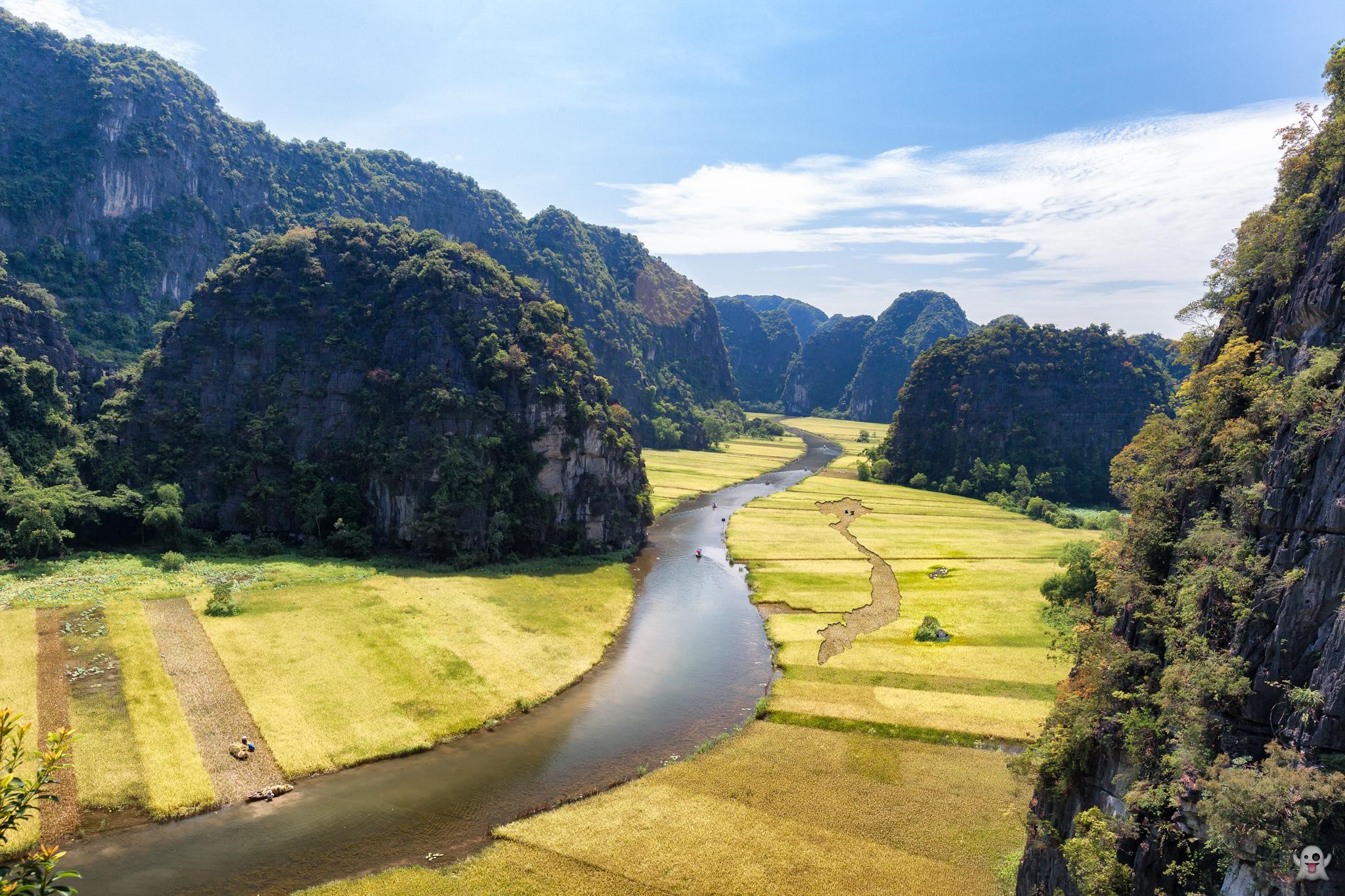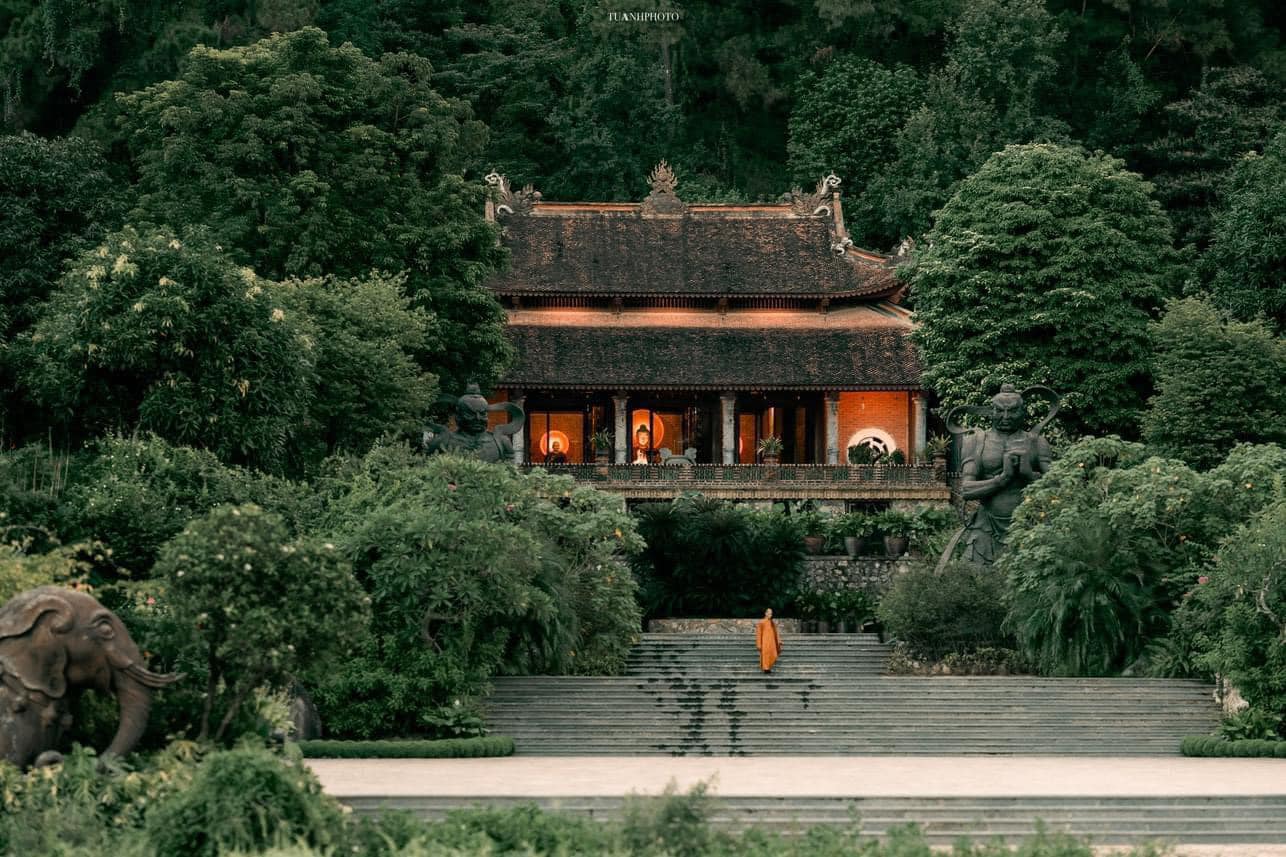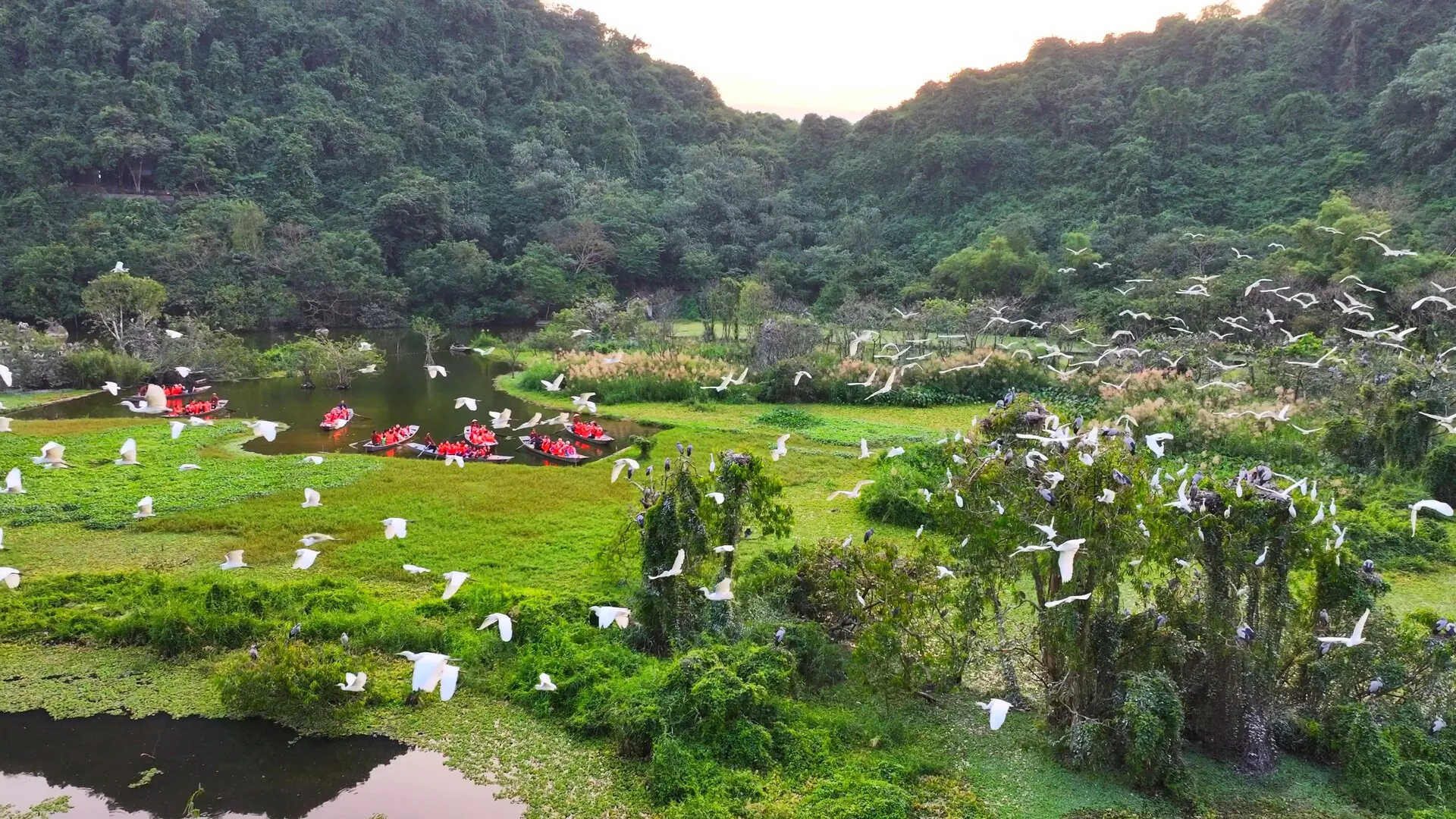Temple of King LÊ Äᚥi Hà nh â Photo: Internet
Hoa LÆ° Ancient Capital â A Glorious Legacy of the Vietnamese Nation
Hoa LÆ° Ancient Capital is one of the most captivating destinations in Ninh Binh that travelers should not miss. As the first imperial capital of a centralized feudal state in Vietnam, Hoa LÆ° holds immense historical value â and it also mesmerizes wanderers with its majestic mountain landscapes and breathtaking natural charm.
Table of contents
1. Introduction to Hoa LÆ° Ancient Capital
Hoa LÆ° Ancient Capital is a complex of architecture and nationally significant historical relics in Vietnam. It has also been recognized by UNESCO as one of the four core zones within the Trang An Landscape Complex â a World Cultural and Natural Heritage Site. Hoa LÆ° was the capital of Vietnam immediately after the country emerged from over a thousand years of Chinese domination. According to historical records, Hoa LÆ° served as the capital during the Äinh Dynasty (968â980) and the Early LÊ Dynasty (980â1009). The LÃ― Dynasty also briefly ruled from Hoa LÆ° for one year (1009â1010) before relocating the capital to Äᚥi La (present-day Hanoi).
Having witnessed over 1,100 years of turbulent history, Hoa LÆ° Ancient Capital stands as a living testament to the heroic chapters of the Vietnamese nation. The remaining relics â temples, tombs, and pagodas â are invaluable traces of the past. A visit to Hoa LÆ° offers not only a chance to explore historical events and honor the heroic figures of earlier times, but also to immerse oneself in the solemn atmosphere and serene beauty of this sacred land.
ð Address: Truong Yen Commune, Hoa LÆ° District, Ninh Binh Province
ðŦ Entrance Fee: 20,000 VND/person
2. Transportation to Hoa LÆ° Ancient Capital
From downtown Hanoi, the distance to Hoa LÆ° Ancient Capital is approximately 96 km. If departing from the center of Ninh Binh City, the distance is only about 15 km. Below are some transportation options for traveling from Hanoi to Ninh Binh:
-
Motorbike: A suitable option if youâre physically fit and looking for a more adventurous, self-guided journey through the sunlit, breezy countryside. It typically takes around 1.5 hours to reach Hoa LÆ° by motorbike.
-
Passenger bus or limousine service: Another popular mode of transportation is the intercity bus. You can catch a bus from Giap Bat or My Dinh bus stations in Hanoi, with travel time around 60 minutes. From Ninh Binh City center, youâll need to take a motorbike taxi or regular taxi to reach Hoa LÆ° Ancient Capital. Alternatively, you can book a Khanh An limousine service, which offers door-to-door pickup and drop-off. Hotline: 1900 8629.
3. Best Time to Visit Hoa LÆ° Ancient Capital
Hoa LÆ° Ancient Capital is known for its vibrant traditional festivals held in honor of the kings who founded and defended the nation in ancient times. For the most meaningful experience, it is recommended to visit during the dry season rather than during the heavy rains. The most ideal times include:
- Early Spring (Post-Lunar New Year): Right after the Lunar New Year, residents of Hoa LÆ°, Ninh Binh, host a variety of traditional festivals that are well worth attending, such as thatakes place, also known as the Cáŧ Lau Festival. It is one of the most iconic and long-standing traditional festivals of Hoa LÆ° and is held annually from the 8th to the 10th day of the third lunar month.
4. Historical Imprints of the Ancient Capital of Hoa LÆ°
4.1. Temple of King Äinh TiÊn Hoà ng
Äinh Báŧ LÄĐnh ascended the throne after quelling the chaos of the Twelve Warlords and adopted the imperial title Äinh TiÊn Hoà ng. He was the first emperor of Vietnam following centuries of Chinese domination, and he was also the one who chose Hoa LÆ° as the capital of Äᚥi Cáŧ Viáŧt.
The temple is renowned for its ancient architecture, featuring intricate green stone carvings and a spacious courtyard set against the imposing backdrop of MÃĢ YÊn Mountain. It is an impressive historical site that promises to leave a lasting impression on your journey.
4.2. Temple of King LÊ Äᚥi Hà nh
LÊ Hoà n served as the Commander of the Ten Circuits under King Äinh TiÊn Hoà ng. He was later honored as one of Vietnamâs 14 national heroes for his achievements in repelling the Song invasion and defending the country.
Upon ascending the throne, he took the title LÊ Äᚥi Hà nh and established the Early LÊ Dynasty, ruling Äᚥi Cáŧ Viáŧt for 24 years. His temple faces the main square of ancient Hoa LÆ° and features a moat at the rearâonce used to guard the former capital. Though smaller in scale than the Temple of King Äinh TiÊn Hoà ng, this temple charms visitors with its tranquil and solemn ambiance.
4.3. The Four Guardian Temples of Hoa LÆ° (Hoa LÆ° TáŧĐ TrášĨn)
The Four Guardian Temples of Hoa LÆ° are dedicated to the tutelary deities believed to have protected the three defensive walls of the ancient capital. These sacred sites also honor national heroes who contributed to the founding and defense of the country. The Four Guardians include:
4.3.1. Eastern Guardian Temple â Worship of the God ThiÊn TÃīn
This deity was worshipped by King Äinh before embarking on his campaign to suppress the Twelve Warlords, seeking divine aid. According to legend, God ThiÊn TÃīn was a celestial being born from a miraculous dream: a queen dreamed of swallowing the sun and later gave birth to a prince. As he grew, the prince became renowned for his unmatched strength and heroic prowess.
After 42 years of spiritual cultivation at Mount DÅĐng DÆ°ÆĄng (in Hoa LÆ°), he attained enlightenment and was granted the Tam Thai Seven-Star Sword by the Jade Emperor. He was conferred the title Northern General TrášĨn VÅĐ, possessing the supernatural ability to fly, shapeshift, and dispel evil spirits.
ThiÊn TÃīn is located in a region known as “TÚ Tháŧ§y Káŧģ SÆĄn” â a place where rivers and mountains harmonize, offering both strategic defense and natural beauty. Upon ascending the throne, King Äinh TiÊn Hoà ng chose Hoa LÆ° as the capital and constructed the Tiáŧn Tášŋ House and KÃnh ThiÊn Pavilion here as a venue for welcoming foreign envoys.
4.3.2. Western Guardian Temple â Worship of the God Cao SÆĄn
The Temple of God Cao SÆĄn is located within the spiritual tourism complex of BÃĄi ÄÃnh Pagoda. According to legend, Cao SÆĄn was the 17th son of King Lᚥc Long QuÃĒn. He was credited with helping people settle, cultivate the land, and fend off destructive forces. For his contributions, he was granted the title Lᚥc General of VÅĐ LÃĒm and honored with a temple on the western side of Mount ÄÃnh.
During his patrols from Nam LÄĐnh to ThiÊn DÆ°áŧĄng, Cao SÆĄn Äᚥi VÆ°ÆĄng is also said to have discovered a rare plant whose stem could be ground into flour to make cakes as a substitute for rice flour. He named the plant Quang Lang, after himself.
4.3.3. Southern Guardian Temple â Worship of the God QuÃ― Minh
Today, this is known as Trᚧn Temple, also referred to as Náŧi LÃĒm Temple. According to legend, QuÃ― Minh Äᚥi VÆ°ÆĄng was a water deity who played a vital role in defending the lowland frontier of SÆĄn Nam and safeguarding the nationâs borders during the reign of the 18th HÃđng King.
In recognition of his great contributions, QuÃ― Minh was conferred the title of âThÆ°áŧĢng Äášģng Thᚧnâ (Supreme Deity) and was honored through multiple imperial dynasties. The people of the region have long revered and worshipped him. The main temple was originally built by King Äinh TiÊn Hoà ng in the southern sector of the ancient capital (modern-day Trà ng An), and it was later reconstructed under the reign of King Trᚧn ThÃĄi TÃīng, remaining largely intact to this day.
4.3.4. Northern Guardian Temple â Worship of the God KhÃīng Láŧ
The Temple of KhÃīng Láŧ Zen Master Nguyáŧ n Minh KhÃīng, also known as ÄáŧĐc ThÃĄnh Nguyáŧ n Temple, is an ancient temple located in Gia ThášŊng and Gia Tiášŋn Communes, Gia Viáŧ n District. It is dedicated to Zen Master Nguyáŧ n Minh KhÃīng, a highly revered monk of the LÃ― Dynasty, who was honored with the noble title LÃ― Quáŧc SÆ° (National Master of the LÃ― Dynasty).
The temple was built on the site of ViÊn Quang Pagoda, which was founded by Nguyáŧ n Minh KhÃīng himself in 1121. After his passing, in deep gratitude for his contributions, the local people transformed the pagoda into a temple and renamed it in his honor.
In addition to his spiritual legacy, Nguyáŧ n Minh KhÃīng made significant contributions to the revival of bronze casting techniquesâan essential craft rooted in the ancient civilizations of ÄÃīng SÆĄn and Viáŧt Cáŧ. Legend has it that the deity KhÃīng Láŧ possessed the supernatural ability to fly through the air, and to conjure mountains, caves, and lakes.
5. Hoa LÆ° Festival
5.1. Festival of Saint QuÃ― Minh Äᚥi VÆ°ÆĄng
The Festival of Saint QuÃ― Minh Äᚥi VÆ°ÆĄng is held annually on the 18th day of the 3rd lunar month at Trà ng An, Ninh Binh. This traditional event worships QuÃ― Minh, a water deity believedâaccording to folk beliefsâto be a descendant of Lᚥc Long QuÃĒn and Ãu CÆĄ, the legendary ancestors of the Vietnamese people.
During the Hoa LÆ° Festival, visitors from across the country can participate in sacred rituals such as the water procession, ceremonial offerings, and the releasing of animals back into nature (a Buddhist rite of compassion) along the river. Thousands of colorfully decorated boats traverse over 11 limestone caves on the Sà o KhÊ River. The fleet is then divided in two: one half docks, while the other continues a 3-kilometer journey to Náŧi LÃĒm Temple, where further ceremonial rites are conducted.
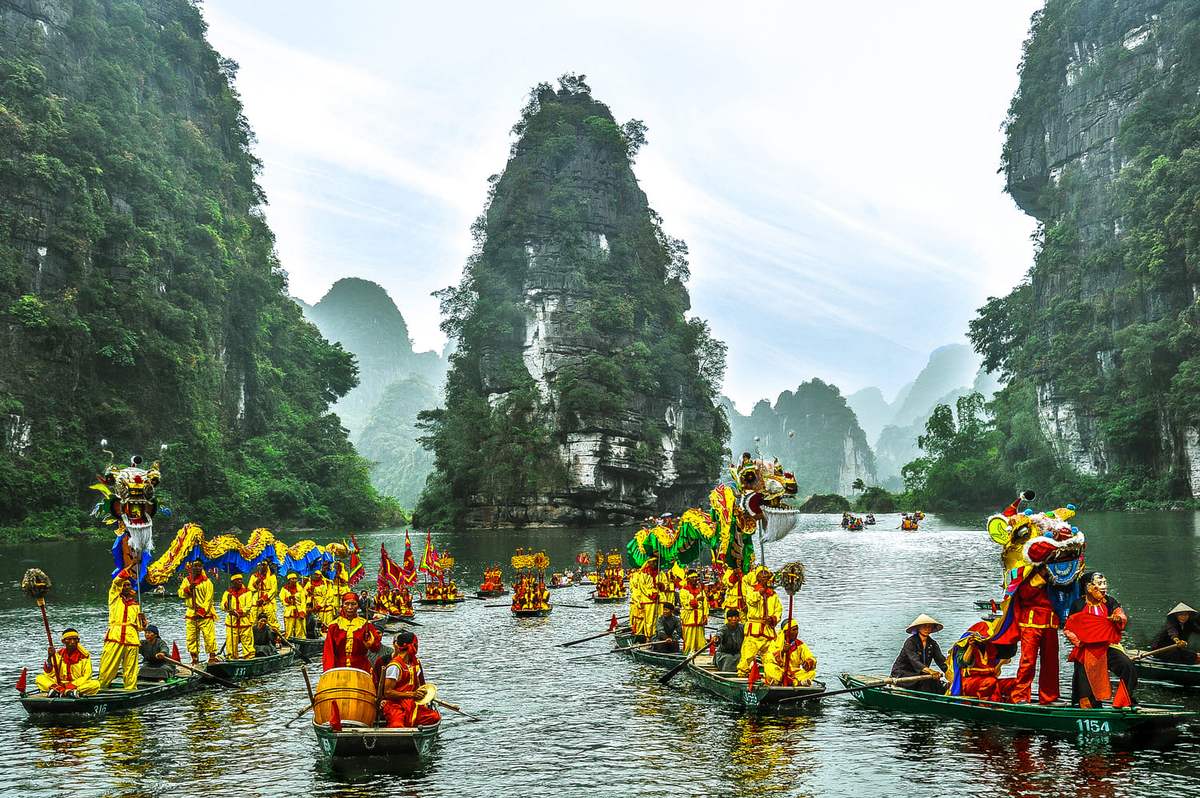
Festival of Saint QuÃ― Minh Äᚥi VÆ°ÆĄng â Photo: Internet
5.2. ThÃĄi Vi Temple Festival
The ThÃĄi Vi Temple Festival is held to honor the kings of the Trᚧn Dynasty, who made significant contributions to the building and defense of the nation. The highlight of the festival is the royal palanquin procession, featuring the participation of more than 30 delegations from across Hoa LÆ°, Ninh Binh.
Equally important is the solemn ceremonial offering held in front of ThÃĄi Vi Temple. The festival concludes with a lively series of traditional games and performances, including lion and dragon dances, wrestling matches, and human chess, among others.
5.3. TrÆ°áŧng YÊn Festival
The TrÆ°áŧng YÊn Festival takes place annually from the 10th to the 13th day of the 3rd lunar month, commemorating the contributions of Emperor Äinh TiÊn Hoà ng and Emperor LÊ Äᚥi Hà nhâtwo national heroes who played pivotal roles in founding and developing the early Vietnamese state.
The festival consists of two parts:
- The ceremonial rituals include a water procession held at the TrÆ°áŧng YÊn Wharf on the Hoà ng Long River, conducted in a solemn atmosphere in front of the temples dedicated to Kings Äinh and LÊ.
- The festive activities feature a variety of traditional games such as the âCáŧ Lau Tášp Trášnâ (re-enactment of ancient military drills with reed flags), calligraphy writing, Chinese chess competitions, and the Hoa LÆ° Cultural Beauty Pageant.
6. What Local Specialties Can Be Found at Hoa LÆ° Ancient Capital?
Goat Meat
Mountain goat meat is a must-try specialty in Ninh Binh. The goats are raised naturally on rocky mountains, giving the meat a firm texture and rich flavor. Local chefs prepare the meat in a variety of delicious and nutritious dishes such as grilled goat, goat with lime, steamed goat, goat spring rolls, goat blood pudding, and goat porridgeâeach offering a distinct culinary experience.
Crispy Rice (CÆĄm ChÃĄy)
Crispy rice is a long-standing specialty of the ancient capital region. Made from familiar, humble ingredients, it is transformed into a flavorful delicacy through the skilled hands of local artisans. A traditional way to enjoy cÆĄm chÃĄy is by dipping it in goat meat sauce, a savory gravy made from mountain goat that’s rich in flavor.
When visiting Ninh Binh, you can enjoy this dish at local restaurants such as Thung Nham Restaurant, ChÃnh ThÆ°, or TáŧĨng Dungâand even take some home as a gift for family and friends.
Fermented Raw Fish Salad (Gáŧi CÃĄ Nháŧch)
Nháŧch fish is a slippery, eel-like fish that lives in brackish and freshwater environments. The Kim SÆĄn district of Ninh Binh is considered one of the best places in Northern Vietnam to try Gáŧi CÃĄ Nháŧch. The preparation is meticulous: the fish is first scrubbed with salt or ash to remove its slimy outer layer, then drained of blood, cleaned thoroughly, and deboned. The flesh is then marinated with a blend of specialty spices to preserve its aroma and sweetness. The result is a unique dish with bold flavors that showcases the culinary ingenuity of the region.
7. Nearby Attractions to Hoa LÆ° Ancient Capital
- Thung Nham Ecotourism Zone â 20 km
- Tam Cáŧc â BÃch Äáŧng â 17 km
- Hang MÚa (Mua Cave Viewpoint) â 8 km
- Trà ng An Landscape Complex â 4 km
- Tuyáŧt Táŧnh Cáŧc (Am Tiem Cave) â 350 meters
- BÃĄi ÄÃnh Pagoda â 10 km
8. Accommodation Near Hoa LÆ° Ancient Capital
There are many hotels and homestays around Hoa LÆ° offering a variety of room types at reasonable prices. Some notable options include:
- Thung Nham Resort â Located within Thung Nham Ecotourism Zone
Address: Hai Nham Hamlet, Ninh Hai Ward, Hoa LÆ° District - Anâs Eco Garden
Address: Binh Khe Hamlet, Ninh Nhat Ward - Toki Cottage
Address: Dam Khe Hamlet, Ninh Hai Ward, Hoa LÆ° District
9. Useful Tips for Visiting Hoa LÆ° Ancient Capital
To ensure a more enjoyable and fulfilling trip to Hoa LÆ°, Ninh Binh, keep the following tips in mind:
- Respect the cultural and spiritual significance: As Hoa LÆ° is a renowned historical, cultural, and spiritual heritage site, visitors are expected to dress modestly and respectfully. Maintain a quiet, solemn demeanor and refrain from littering or causing disruption during your visit.
- Prepare for outdoor exploration: Since most of the attractions at Hoa LÆ° are outdoors, itâs advisable to bring a hat, sunscreen, bottled water, and other essentials to cope with the heat and avoid discomfort during hot weather.
- Follow group and site guidelines: If traveling in a group, follow the instructions of your tour guide and site management staff. Engage in conversation with site staff or guides to gain deeper insights into the historical and cultural significance of the relic complex.
Unlike any other tourist attraction, the Hoa LÆ° Ancient Capital Relic Complex in Ninh Binh is not merely a sightseeing destinationâit offers enriching and profound insights into the dynasties of Vietnamese kings and the remarkable individuals who laid the foundations of the nation.
Travel is not only about admiring scenic landscapes or indulging in local delicacies; it is also an opportunity to reflect on history and explore the cultural and historical heritage of our country.

